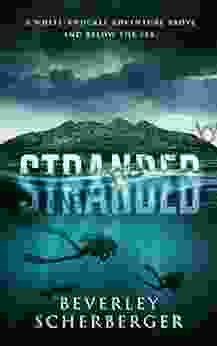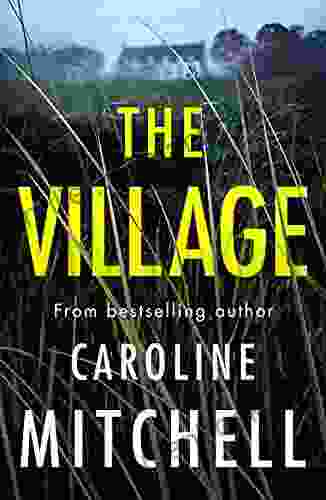The American Saga Three Lines At Time: A Rich Tapestry of History and Identity

The American saga is a vast and ever-unfolding tapestry, woven from countless threads of individual lives and collective experiences. Within this intricate fabric, poetry has played a vital role in capturing the essence of our nation's spirit and aspirations.
The Dawn of Three-Line Poetry in America
The three-line poem, also known as the "tercet," has a rich literary heritage that stretches back to ancient Greece. In America, it gained popularity during the 17th and 18th centuries, as poets sought a concise and evocative form to express their thoughts and emotions.
4.3 out of 5
| Language | : | English |
| File size | : | 1862 KB |
| Text-to-Speech | : | Enabled |
| Screen Reader | : | Supported |
| Enhanced typesetting | : | Enabled |
| Word Wise | : | Enabled |
| Print length | : | 76 pages |
One of the earliest examples of a three-line poem in America is "Upon the Burning of Our House" by Anne Bradstreet, written in 1666. In this poignant piece, Bradstreet reflects on the loss of her home and possessions, finding solace in the enduring power of faith:
I had but little hoard of earthly wealth, Yet far above these poor accommodations; It therefore little moved my soul to hear our servants moan.
Three Lines, a World of Meaning
The three-line poem's brevity demands precision and economy of language. Poets must carefully select each word to convey a maximum of meaning in a minimum of space. This challenge has inspired some of the most powerful and memorable lines in American poetry.
Consider Emily Dickinson's famous tercet "Hope" (1862):
Hope is the thing with feathers That perches in the soul And sings the tune without the words.
In just three lines, Dickinson captures the elusive yet indomitable nature of hope, using vivid imagery and musicality to evoke its transformative power.
The Tercet in Colonial and Revolutionary America
During the colonial and revolutionary eras, three-line poems were often used to express political and patriotic sentiments. Phillis Wheatley, an enslaved African American poet, wrote several tercets that condemned slavery and celebrated the cause of liberty.
In her poem "On the Death of General Wolfe" (1759),Wheatley mourns the death of the British general who led the conquest of Quebec. However, she also uses the opportunity to question the morality of war and the sacrifice of human life:
But let our country's foes repent their rage, And timely learn submission to her sway; For God has blest, and will bless her in every age.
The Tercet in the 19th and 20th Centuries
In the 19th and 20th centuries, the three-line poem continued to flourish, becoming a favorite form for poets seeking to explore a wide range of themes, from love and loss to nature and the human condition.
Walt Whitman, the quintessential American poet, wrote numerous tercets that celebrated the beauty and diversity of the country. In his poem "Song of Myself" (1855),he declares:
I am large, I contain multitudes, I am of old and young, of the foolish as much as the wise, I am of every hue and caste, of every rank and religion.
In the 20th century, modernist poets such as Ezra Pound and T.S. Eliot experimented with the tercet, using it to explore fragmented realities and complex psychological landscapes.
Pound's famous tercet "In a Station of the Metro" (1916) captures the fleeting beauty of a moment in the Paris subway:
The apparition of these faces in the crowd; Petals on a wet, black bough.
The Tercet in Contemporary American Poetry
In contemporary American poetry, the tercet remains a vibrant and versatile form. Poets of all backgrounds and generations continue to use it to express their unique perspectives and grapple with the challenges and triumphs of the present day.
Adrienne Rich, a prominent feminist poet, uses the tercet in her poem "Diving into the Wreck" (1973) to explore the complexities of female identity and the search for self-discovery:
First having read the book of myths, And loaded the camera, And checked the edge of the knife-blade, I put on The body of my father's daughter.
The tercet has also become a popular form for contemporary haiku poets, who use its brevity and rhythmic constraints to create concise and evocative nature-inspired pieces.
In Billy Collins' haiku "In the Grass" (2005),he observes:
In the tall grass A wind whispers secrets Only to the grass.
4.3 out of 5
| Language | : | English |
| File size | : | 1862 KB |
| Text-to-Speech | : | Enabled |
| Screen Reader | : | Supported |
| Enhanced typesetting | : | Enabled |
| Word Wise | : | Enabled |
| Print length | : | 76 pages |
Do you want to contribute by writing guest posts on this blog?
Please contact us and send us a resume of previous articles that you have written.
 Top Book
Top Book Novel
Novel Fiction
Fiction Nonfiction
Nonfiction Literature
Literature Paperback
Paperback Hardcover
Hardcover E-book
E-book Audiobook
Audiobook Bestseller
Bestseller Classic
Classic Mystery
Mystery Thriller
Thriller Romance
Romance Fantasy
Fantasy Science Fiction
Science Fiction Biography
Biography Memoir
Memoir Autobiography
Autobiography Poetry
Poetry Drama
Drama Historical Fiction
Historical Fiction Self-help
Self-help Young Adult
Young Adult Childrens Books
Childrens Books Graphic Novel
Graphic Novel Anthology
Anthology Series
Series Encyclopedia
Encyclopedia Reference
Reference Guidebook
Guidebook Textbook
Textbook Workbook
Workbook Journal
Journal Diary
Diary Manuscript
Manuscript Folio
Folio Pulp Fiction
Pulp Fiction Short Stories
Short Stories Fairy Tales
Fairy Tales Fables
Fables Mythology
Mythology Philosophy
Philosophy Religion
Religion Spirituality
Spirituality Essays
Essays Critique
Critique Commentary
Commentary Glossary
Glossary Bibliography
Bibliography Index
Index Table of Contents
Table of Contents Preface
Preface Introduction
Introduction Foreword
Foreword Afterword
Afterword Appendices
Appendices Annotations
Annotations Footnotes
Footnotes Epilogue
Epilogue Prologue
Prologue Annette Marie
Annette Marie Ronald D Miller
Ronald D Miller Thomas Barta
Thomas Barta Wendy Conklin
Wendy Conklin Charlotte Bingham
Charlotte Bingham Travis Lett
Travis Lett Sara B Marcketti
Sara B Marcketti Penelope Sky
Penelope Sky R Stephen Smith
R Stephen Smith William M Adler
William M Adler Viola Grace
Viola Grace Gregory J Cizek
Gregory J Cizek Stephen Cantrell
Stephen Cantrell Webster Young
Webster Young Jay Verney
Jay Verney Michel Houellebecq
Michel Houellebecq Paul Stamets
Paul Stamets Michael Cimicata
Michael Cimicata Rebecca Elson
Rebecca Elson Christopher G Nuttall
Christopher G Nuttall
Light bulbAdvertise smarter! Our strategic ad space ensures maximum exposure. Reserve your spot today!
 Boris PasternakFollow ·7k
Boris PasternakFollow ·7k Samuel BeckettFollow ·13.8k
Samuel BeckettFollow ·13.8k Brenton CoxFollow ·18.6k
Brenton CoxFollow ·18.6k Mason PowellFollow ·3.3k
Mason PowellFollow ·3.3k Johnny TurnerFollow ·19.9k
Johnny TurnerFollow ·19.9k George MartinFollow ·15.7k
George MartinFollow ·15.7k Hector BlairFollow ·18.7k
Hector BlairFollow ·18.7k Dennis HayesFollow ·16.8k
Dennis HayesFollow ·16.8k

 Caleb Carter
Caleb CarterThe Complete Beagle Dog Beginners Guide: Beagle Facts,...
Beagles are...

 Gage Hayes
Gage HayesThe Origins and Evolution of No Child Left Behind:...
The No Child Left Behind...

 George Martin
George MartinThe Love Pirates: A Swashbuckling Tale of Love,...
The Love Pirates is a thrilling...
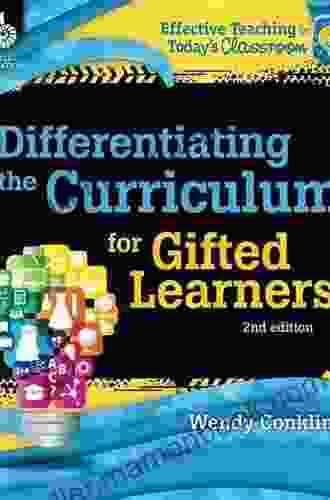
 Nathaniel Hawthorne
Nathaniel HawthorneDifferentiating the Curriculum for Gifted Learners:...
Gifted learners are...
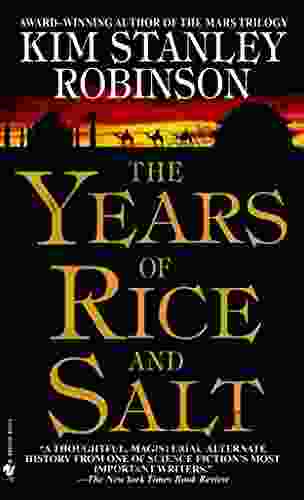
 Carlos Fuentes
Carlos FuentesThe Years of Rice and Salt: A Journey Through a Forgotten...
The Years of Rice and Salt is...
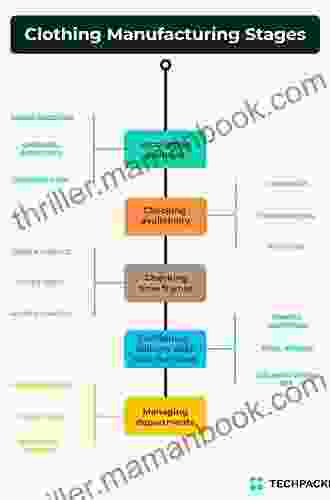
 Herbert Cox
Herbert CoxThe Intricate Design of Clothing Manufacturing Processes:...
The clothing industry is a vast and...
4.3 out of 5
| Language | : | English |
| File size | : | 1862 KB |
| Text-to-Speech | : | Enabled |
| Screen Reader | : | Supported |
| Enhanced typesetting | : | Enabled |
| Word Wise | : | Enabled |
| Print length | : | 76 pages |



